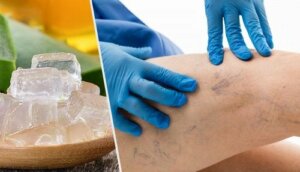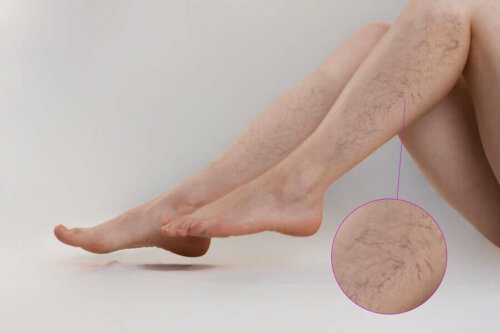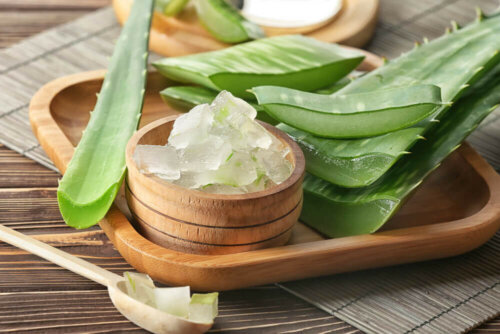Five Alternative Treatments for Varicose Veins


Reviewed and approved by the doctor José Gerardo Rosciano Paganelli
Before telling you more about the alternative treatments that exist, we’ll tell you a little more about the most common causes of varicose veins and other related issues.
Causes of varicose veins

According to Dr. James Douketis, “the exact cause of varicose veins is unknown, but it’s likely that the main problem is a weakness in the walls of the superficial veins (located just under the skin), which may be hereditary”.
However, many people think poor blood circulation causes varicose veins. However, they can also result, indirectly or directly, from factors such as:
- Obesity
- Sedentary lifestyle
- Hypertension
- High cholesterol
- Genetic inheritance
Another influential factor to keep in mind is not paying enough attention to cardiovascular health. As a response, we recommend that you receive an annual check-up. You should especially do so if there’s a family history or if you suffer from any kind of cardiovascular problem.
Try these Three Challenges when You Try to Lose Weight
Treating varicose veins
Varicose veins don’t have medical treatment. Generally, what’s recommended is to do regular exercise, as well as to keep hydrated and eat well, and maintain other good lifestyle habits.
However, the physician may instruct the patient to wear compression stockings or to take a supplement with diuretic properties to alleviate discomfort.
In addition, surgery is often only reserved for only the most serious cases.
As you can see, although treating varicose veins is possible with some very simple practices, the best thing you can do is to prevent them by maintaining good lifestyle habits.
Preventing varicose veins
The best thing that we can do to take care of ourselves is to opt for healthy habits and a balanced lifestyle. This includes the following:
- Stay hydrated
- Exercise regularly
- Follow a healthy diet
- Avoid standing or sitting for long periods of time

Additionally, you need to see to the following actions:
- Wear comfortable shoes every day
- Avoid using tight clothing
- Stretch every 2 hours (at least while you’re in the office)
- Elevate your feet every once in a while so that blood can flow back easier
- Optionally, you can massage your feet with any kind of essential oil for 15 to 20 minutes a day
- Alternate the water temperature when taking a shower. By doing so, you can improve your blood circulation. When you use hot water, it shouldn’t be hotter than 100 ºF.
Natural alternative treatments for treating varicose veins
Even though there is a wide range of venotonic and vasoprotective drugs available, there are also natural alternatives for varicose veins. Their effectiveness depends on how often you choose to use them. Consult with your physician to find out which option is best for you.
Alternative medicine also proposes some dietary supplements. It helps prevent and alleviate the most common discomforts – swelling, heaviness, fluid retention – and stimulates blood circulation.
In health food stores you can find supplements of:
- Garlic
- Mint
- Bay leaf
- Eucalyptus
- Marigold
- Aloe vera
- Carrot
- Sea salt
- Horsetail
- Horse chestnut
The benefits of these alternative treatments for varicose veins
Among the natural treatment options for treating varicose veins, is the well-known aloe vera plant. It’s the plant that offers the most aesthetic benefits. Using its gel in cold packs, directly on legs, activates circulation.

If we look at other options, mint, bay leaf and eucalyptus are plants that have a refreshing effect, which is very helpful for treating varicose veins. They can be used as tonics or body lotions, applied directly onto the skin. You can use baking soda to make the tonic.
Both bay leaves and marigold petals are very helpful for preparing a paste to treat varicose veins. You can apply the paste at night and leave it on until morning. You can also take advantage of the plant stem and make a refreshing tonic.
Saltwater baths are extremely relaxing, which helps blood circulation considerably. You can add a little apple cider vinegar to the bath to maximize its benefits.
A great advantage of using these natural ingredients is that they’re much more economical than their pharmaceutical counterparts. However, we want to emphasize that natural remedies shouldn’t be the only treatment that you use. You should aim to use them as additional measures to your physician’s recommendations.
All cited sources were thoroughly reviewed by our team to ensure their quality, reliability, currency, and validity. The bibliography of this article was considered reliable and of academic or scientific accuracy.
- Arora M. Management of varicose veins. JK Science 2017. Available at: https://doi.org/10.9738/INTSURG-D-14-00084.1. Accessed 01/29, 2019.
- Bootun R, Onida S, Lane TRA, Davies AH. Varicose veins and their management. Surgery (United Kingdom) 2016. Available at: https://doi.org/10.1016/j.mpsur.2016.02.002. Accessed 01/29, 2019.
- Mandavia R, Anwar MA, Davies AH. Varicose veins. Metabolism of Human Diseases: Organ Physiology and Pathophysiology 2014. Available at: https://doi.org/10.1007/978-3-7091-0715-7_40. Accessed 01/29, 2019.
- Muley, B. P., Khadabadi, S. S., & Banarase, N. B. (2009). Phytochemical constituents and pharmacological activities of Calendula officinalis Linn (Asteraceae): A review. Tropical Journal of Pharmaceutical Research. Pharmacotherapy
This text is provided for informational purposes only and does not replace consultation with a professional. If in doubt, consult your specialist.








